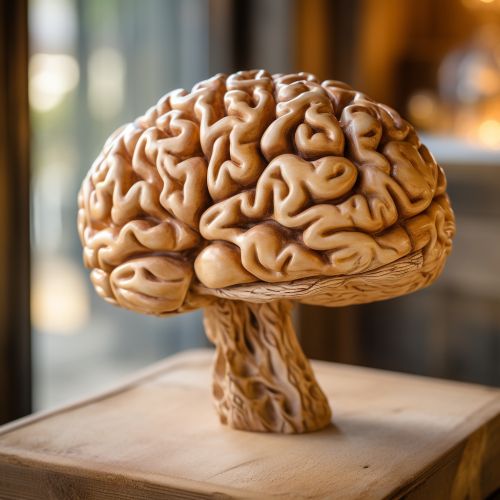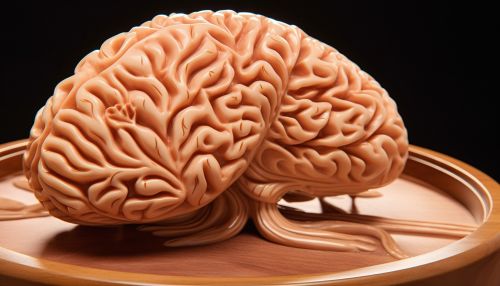Cognitive Mechanisms of Cognitive Biases and Heuristics
Introduction
Cognitive biases and heuristics are psychological phenomena that influence human decision-making and judgment. Cognitive biases are systematic errors in thinking that occur when people process and interpret information in the world around them, affecting the decisions and judgments that they make. Heuristics, on the other hand, are mental shortcuts or "rules of thumb" that simplify decision-making. Both cognitive biases and heuristics are cognitive mechanisms that can lead to deviations from logic and rationality.


Cognitive Biases
Cognitive biases are systematic patterns of deviation from norm or rationality in judgment, whereby inferences about other people and situations may be drawn in an illogical fashion. They are often a result of our brain's attempt to simplify information processing. They are rules of thumb that help us make sense of the world and reach decisions with relative speed. Some of these biases are related to memory. The way we remember an event may be biased for a number of reasons and that in turn can lead to biased thinking and decision-making. Other cognitive biases might be due to problems not associated with memory.
Types of Cognitive Biases
There are several types of cognitive biases, including confirmation bias, anchoring bias, and availability heuristic.
Confirmation bias is the tendency to search for, interpret, favor, and recall information in a way that confirms one's preexisting beliefs or hypotheses. This bias can lead to faulty decision making because one-sided information tends to skew our understanding of the situation.
Anchoring bias is a cognitive bias that describes the human tendency to rely too heavily on the first piece of information encountered (the "anchor") when making decisions. Once an anchor is set, other judgments are made by adjusting away from that anchor, and there is a bias toward interpreting other information around the anchor.
Availability heuristic is a mental shortcut that relies on immediate examples that come to mind. When trying to make a decision, a number of related events or situations might immediately spring to mind. Because these memories are more readily available, you may overestimate their importance and apply that faulty logic to the decision at hand.
Heuristics
Heuristics are simple, efficient rules, learned or hard-coded by evolutionary processes, that have been proposed to explain how people make decisions, come to judgments, and solve problems, typically when facing complex problems or incomplete information. These rules work well under most circumstances, but in certain cases lead to systematic errors or cognitive biases.
Types of Heuristics
There are several types of heuristics, including the representativeness heuristic, the availability heuristic, and the anchoring and adjustment heuristic.
The representativeness heuristic is used when making judgments about the probability of an event under uncertainty. It is one of the ways people make decisions when they do not have all the facts. They base their decision on how representative the situation is of their existing mental models or schemas.
The availability heuristic is a mental shortcut that relies on immediate examples that come to mind. The availability heuristic operates on the notion that if something can be recalled, it must be important. People tend to heavily weigh their judgments toward more recent information, making new opinions biased toward that latest news.
The anchoring and adjustment heuristic is used in decision-making where people start from a particular value and adjust to the final decision. The initial value, or anchor, sets a cognitive bias in motion that then alters the final decision.
Cognitive Mechanisms Behind Biases and Heuristics
The cognitive mechanisms behind biases and heuristics are complex and multifaceted. They involve a range of mental processes, from attention and perception to memory and reasoning. These mechanisms are influenced by a variety of factors, including our past experiences, current context, and individual differences in cognitive and emotional processing.


Attention and Perception
Attention and perception play a crucial role in the formation of biases and heuristics. Our attention is limited and we cannot process all the information available in our environment. As a result, we often focus on information that is salient, relevant, or confirms our existing beliefs, leading to biases such as the confirmation bias and the anchoring bias.
Memory
Memory is another important cognitive mechanism behind biases and heuristics. Our memories are not perfect representations of past events. Instead, they are constructive in nature, meaning that they can be influenced by our current knowledge, beliefs, and expectations. This can lead to biases in how we recall and interpret information, affecting our decisions and judgments.
Reasoning
Reasoning is a cognitive process that involves forming conclusions, judgments, or inferences from facts or premises. Biases and heuristics can influence our reasoning processes, leading us to make decisions that are not always logical or rational. For example, the availability heuristic can lead us to overestimate the likelihood of events that are easily brought to mind, influencing our decisions and judgments.
Impact of Cognitive Biases and Heuristics
Cognitive biases and heuristics have a significant impact on our decision-making processes. They can lead to errors in judgment, poor decision making, and can even contribute to societal problems such as discrimination and prejudice.
However, it's important to note that not all cognitive biases and heuristics are negative. In many cases, these mental shortcuts can help us make decisions more quickly and efficiently. They allow us to navigate our complex world with relative ease, making them an essential part of human cognition.
Mitigating Cognitive Biases and Heuristics
While it's impossible to completely eliminate cognitive biases and heuristics, there are strategies that can help mitigate their impact. These include increasing awareness of biases and heuristics, encouraging critical thinking, and promoting diversity and inclusion.


Increasing Awareness
One of the most effective ways to mitigate the impact of cognitive biases and heuristics is to increase awareness of these mental shortcuts and the ways in which they can influence our decisions and judgments. This can be achieved through education and training.
Encouraging Critical Thinking
Critical thinking involves analyzing and evaluating information in a careful, systematic way. By encouraging critical thinking, we can help individuals question their assumptions, consider alternative perspectives, and make more informed decisions.
Promoting Diversity and Inclusion
Diversity and inclusion can also help mitigate the impact of cognitive biases and heuristics. By bringing together individuals with different backgrounds, experiences, and perspectives, we can challenge our assumptions, broaden our understanding, and make more balanced decisions.
See Also
- Cognitive Psychology - Decision Making - Behavioral Economics
